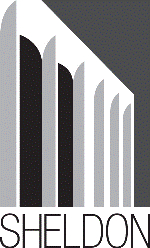Fine and Performing Arts, Hixson-Lied College of

Sheldon Museum of Art: Catalogs and Publications
Date of this Version
1990
Citation
Sheldon Solo Sheldon Memorial Art Gallery JUNE 5 - AUGUST 19, 1990
Abstract
Pure abstract art has always been controversial. Since the first abstractions of early modernism, to the emotional paintings of abstract expressionists during the mid century, the concrete abstraction of minimalism of the 1960s and recent symbolic abstraction, any apparent retreat from representation has been met with discourse. This consternation has been shared by both the lay public and the informed viewer, for the problems posed by abstraction refer to essential questions about reality while they appear to avoid the real world. But this apparent contradiction between non representation and content has become more obscure as both artists and viewers become more visually sophisticated.
In each of its diverse manifestations, abstraction refers to that which is not seen in the world around us, but felt, imagined, or conceived in the mind of the artist. The viewer must take a leap of faith when contending with a work of abstraction, because the usual methods for corroborating the truth are not applicable. A painting of a bouquet of flowers or a bronze sculpture of a mythological goddess are verifiable subjects. The viewer can recognize them from personal or literary experience. But abstraction exists in a hermetic place, unsullied by worldly assumptions. This inherent isolation from the visible world has continually lent abstraction a mysterious role in twentieth century art. And that which is mysterious is often suspect and sometimes threatening.
The first true abstract paintings were made by Wassily Kandinsky in Russia and Arthur Dove in the U.S., each in about 1910. They were logical evolutions of the late nineteenth century rejection of academic art and its insistence upon placid depictions of the natural world or moralistic interpretations of history. As the culmination of early modernism, the first abstractions embodied the radical imperative to pursue an art which could communicate certain transcendental truths without the mediating elements of narration, symbolism, or retinal mimicry. They were paintings which sought a direct communion with the pure truth of an inner reality, or the reality of another plane. They were the tools with which modernists would establish a new aesthetic for the new century, an aesthetic dependent upon the crucial separation of abstraction from realism.


Comments
All images are copyright by the original artists. Publication copyright 1990 The Regents of the University of Nebraska.